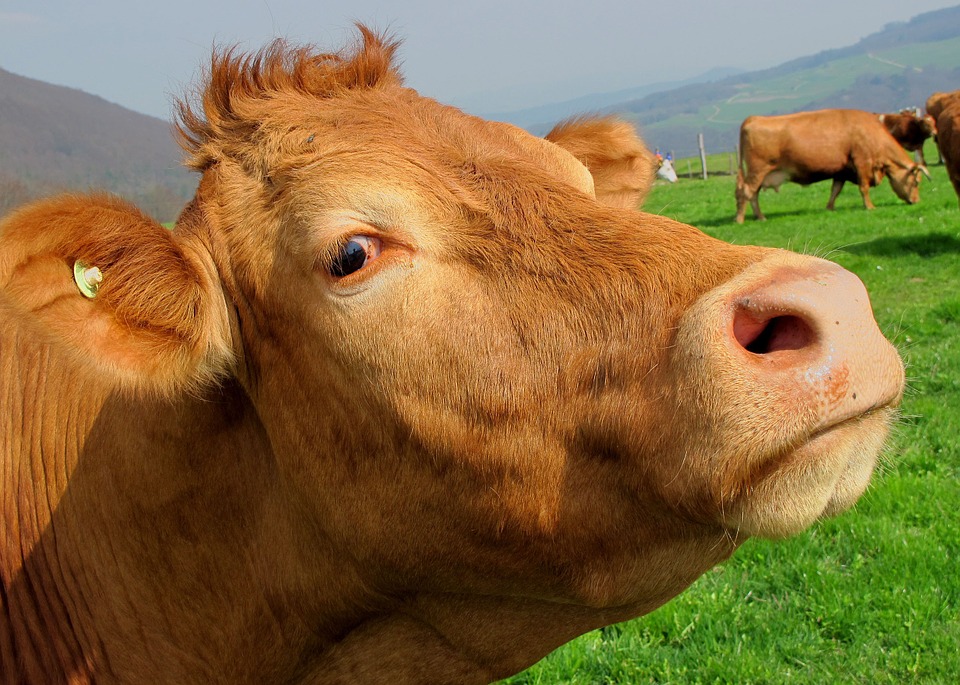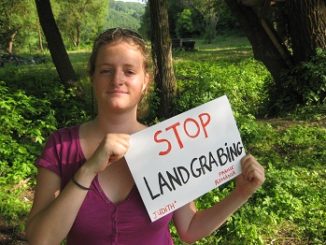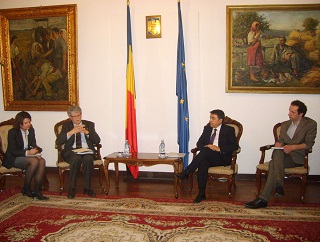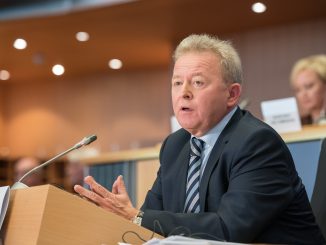During the first decade of this Millennium I spent much time planning and analysing integrated milk production and processing investments. Faced with the twin demands of investors and EU grant applications, the models developed were highly complex. As I was working in Romania, they had to be bilingual. More recently, living in Ireland, I have been appraising Irish dairy farming. This has given me an interesting insight into two dairy industries in very different climates and at different stages of development; be it farming, processing or marketing wise. Surprisingly there is the odd similarity.
Seasonal Production in Ireland and Romania
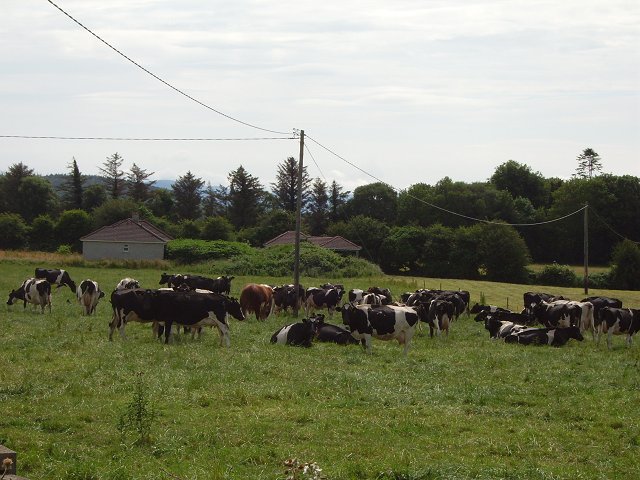
To provide some background, in 2014, the year before quotas ended, Ireland had 1.13 million dairy cow and Romania 1.18 million. Ireland produced 5.8 billion tonnes of milk and Romania 4.1 billion; thus, average yields in Ireland and Romania were 5,162 kg/head and 3,451 kg/head respectively (all Eurostat). By 2017 the Irish herd had grown to 1.43 million and production was an estimated 7.3 billion tonnes [CSO, Ireland) while Romania has remained, at least for the first two years after quota, fairly static. A major difference between the two countries is that virtually all Irish milk is processed by the creameries whereas only 20% of milk in Romania is processed in commercial facilities.
The main similarity between the two dairy sectors is in the seasonality of production. In Ireland a wet maritime climate meant hay was difficult to make and, hence, winter forage was short. It was easier to concentrate on utilizing summer grazing and a long growing season. The result was the historical emphasis on ‘long-life’ butter and hard cheese.
In Romania, since the fall of communism, milk production has been a villager activity. At EU accession some 90% of the national herd was in herds of five or less. Ones and twos predominated. Milk was used at home and sold to neighbours with the spring and summer surplus taken to the village’s communal collection point for purchase by the local ‘factory’. The very little winter milk was consumed at home. The reason behind the seasonality was that conserving forages to boost winter milk production required hard manual work and most cow-keepers were/are of a significant age.
The Agricultural and Horticultural Development Board (AHDB) in the UK recently investigated the seasonal Irish milk production model. It found that its seasonal nature “has become more pronounced the Peak to Trough Ratio (PTR) has increased from 4.7 to 5.7 [from 2010 to 2016] … Ireland produces almost six times as much milk in the peak as it does in the trough. This compares with the UK having a PTR of just 1.2. A ratio that has remained relatively stable”. (AHDB, 2016).
The AHDB then pointed out “that the Irish processing sector will work significantly harder at certain times of the year as opposed to if volumes were delivered evenly throughout the year. For instance, more than 60% of Ireland’s milk production takes place between April and August. While assuming Irish processors had capacity to process peak production in May 2015, this would mean that capacity utilisation between November 2015 and February 2016 would have averaged less than 30%”.
Quantifying the seasonality in Romania is more difficult. The author did, however spend nearly 15 years living in the country and most of that time working with milk production. It was some seven years before EU accession that we identified how significant production seasonality was and how great an issue it was going to be for village cow-keepers in the run-up to, and beyond, 2007.
Romanian Dairy Farming – two failed transitions
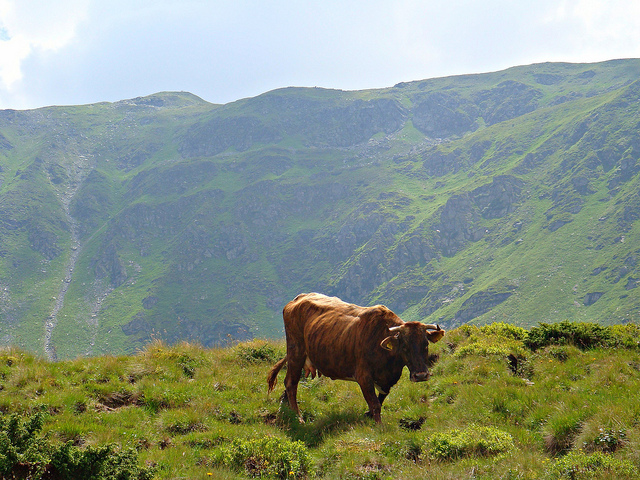
In the immediate post-communist years there was a surge in small-scale local food processor numbers, mostly dedicated to the production of traditional products. They collected milk locally and took what was available, albeit with variable cleanliness standards. As EU accession approached a few processors would have accessed EU funds to upgrade while more would have been unable to produce the business plans demanded by highly-complex application procedures.
The original EU SAPARD programme in Romania was targeted at supporting €100,000 projects with up to 30 dairy cows. It was what was needed to enable a fledgling farming sector to prepare for EU entry. Sadly, a combination of a lack of counter-part funds, the rule that only new machinery and equipment could be bought, and the cumbersome, massively over-complex procedures put the funds well out of reach. Disbursement rarely happened because the system would not allow it.
SAPARD was, however, never for the sub-five cow herd owned by near-subsistence-living villagers. The typical village smallholder had a hectare of arable to grow maize, some hay meadows and access to the communal pasture. The pig and chickens lived in the yard, the sheep summered with shepherds [who returned a proportion of the cheese they made] and the cows went out each day with the village herders. Although milk sales were little and seasonal, they did, nonetheless, provide a small cash income stream for the household. Nevertheless, a few hundred cows and water buffalo owned by the villagers provided a reasonable income stream for the village.
The battle we faced when the new Millennium started was how to enable the village dairy herds to survive. Seasonality was going to be a major inhibitor to viable processing and to developing products and markets. At the same time major west-European milk processors were entering the country, buying-up larger local processors and importing their own products. They imported and then produced a diversity of ‘EU-standard’ dairy products; thus, moving the market away from local products and those smaller local processors who produced them. The latter had neither the capital, access to grants or product or marketing knowledge to compete. And as swiftly, their few larger-scale dairy farmers were enticed away; thus, leaving them with an ever-weaker supply-base.
There was too little effort made to address the crisis that was occurring in the villages as local milk processors disappeared. Further, little was done to help villagers improve milk quality, production or their seasonality. The technology required was low-tech and the funds required were little. They needed portable milking machines, communal cool tanks, simple hay-making machinery and manure spreaders. But it was not for SAPARD. Hence, with EU entry, the remaining larger, nearly all foreign-owned processors made the logical commercial decision to stop collecting milk from the villagers. And there ended their main source of cash income.
This, of course, did not happen overnight. Many were left to face the trauma that was the post-quota milk-price collapse. Europe, awash with milk, provided an alternative supply source for processors and it was tempting to import milk by the tanker rather than collect it here and there locally. An article in ARC2020, Romanian milk farming: from on crisis to another (September 2015) highlighted the plight of the country’s milk producers as prices for some fell as low as €0.11 cpl. The article pointed out that even the new generation of larger-scale farmers were losing their sales outlets as processors found it easier to source from outside the country. It illustrates the point that if one is a larger farmer among many small ones, it counts for little across an entire supply base. The point that is as valid for Ireland as it is Romania. Ireland’s average herd size may be higher, but it still has very many that are very small comparative to those in other commodity-producing regions.

It is fair to say that the Romanian dairy sector did not make a successful transition from communism or into the EU. The massive fragmentation of land and dairy herds that happened post-communism may have been politically expedient at the time, but it created a woefully uncompetitive industry. Far too little help pre-2007, made EU entry just as painful. Vision, technical support and workable grant facilities were all absent. It was always going to be a major step for village milk-producers used to selling their milk to local processors at a time of their choosing, to adjust.
The ADEPT Foundation was one of a few seeking to help, albeit forlornly, at the time. Only recently they accepted that there is no future for traditional dairy farming in the villages that they work in. Instead they are initiating a project to develop premium, pasture-reared Angus beef production upon the region’s very-high-nature-land. The Government is similarly supporting such a change. It is pragmatic, but it is an extraordinary step to have to take in what is God’s own cattle country. Given the natural resources of Transylvania and the Carpathians, it is an issue that must be re-visited, a means to create a viable future for small-scale dairying and milk processing must still be found.
The simple conclusion is that in Romania, processors do not want small volumes of seasonal milk. They want supplies that match the needs of their consumer-product range. It is a normal demand from EU processors who provide dairy products for the EU’s 450 million citizens. Nevertheless, Romania’s small-scale milk producers and the villages have paid a heavy price for not being able to meet the demands of their market. It has been a harsh reality.
Not all Seasonal Producers are Equal

It is interesting to compare the fate of Romania’s seasonal milk producers with those in Ireland. Irish dairy farmers have the good fortune to have cooperative-owned primary processors who are obliged to take the milk that their members produce. It has allowed the milk production sector to invest to expand knowing that their milk sales are guaranteed. Whether the buyer is going to be able to pay a price that gives a sustainable, long-term return on investment is, nevertheless, a different matter.
The end of EU quotas has unfettered Irish dairy farming. It followed a couple of years of buoyant prices and many years of watching New Zealand (NZ) exploit the market opportunities for milk powders that the Chinese melamine-tainted milk scandal in 2008 created. NZ exports were also facilitated by their trade agreement with China and NZ. Ireland is the one country in the EU that follows a similar seasonal, spring-grass focused milk production systems to NZ, so why not follow NZ into the milk powder markets. China had created a boom and the rising hype around global population growth apparently meant that there was a perceived-to-be-solid future in producing milk powder.
As stated at the beginning, post-April 2015, Irish farmers have significantly ratcheted up milk production. Simultaneously the primary processors, being cooperatives obligated to take their members milk, invested massively in stainless steel. To quote the AHDB from 1/3/2016, “the growth in milk production in Ireland is expected to increase its exposure to powder commodity markets. According to the Irish Farmers Journal milk powders are expected to increase their share of the product mix from 10% in 2014 to 33% by 2020. The majority of investment by processors in recent years has been in drying capacity. This suggests the investment has been supply-led to deal with extra milk, rather than demand-led to deliver a customer solution”.
To place this into context, if 2014 production was 5.8 billion litres, one could assume that 580,000 litres was destined for milk powders. If production in 2020 reaches 8.0 billion litres, 2,670,000 litres would be dedicated to powders. In other words, nearly all the expansion milk would be converted into milk powders. This information is of course from early 2016 and time has moved on. There has been a major slump in milk prices and a significant EC intervention into the dairy markets. The result is 400,000 tonnes of skimmed milk powder in EC-controlled storage. Prices have again risen but largely on the back of a butter market boom. One would expect that the headache for the Irish processors at present is how to change their product mix to match market conditions.
Without doubt, Irish dairy farmers had a tough 2015 and 2016. Their pursuit of a yet more seasonal production model has, however, left them even more exposed to global commodity markets. At home, such a seasonality of production is matched by a seasonality in farming activity and that has left the sector well short of peak-time labour. There is the belief that the low-cost milk production from spring grass mode is as cheap as it can get and that Irish farmers will be the last ones standing, but it is an idea that does not account for all the costs. Critically, it also ignores the reality of supply-chain efficiency. It is one that the Romanian dairy farmer has come to know explicitly; if you do not fit with the processors needs to fulfil consumer-product demand, you lose your sales outlet.
We do not know if an Irish processing industry operating for some of the year at only 30% capacity can produce for global commodity markets and pay a long-term, sustainable farm-gate price. At times one reads about New Zealand’s need to add-value and change, but Ireland has gone to where NZ is leaving. The Irish processing sector is itself insulated by a quirky pricing situation that allows it to set its milk purchasing price a few weeks after it receives and processes its milk. It is and has been financially successful, even during the downturns, because it can work to a margin and price the pain back to its farmer-member suppliers. Whether the whole is a sustainable model for a rapidly-expanding, rapidly-growing dairy farming sector is anyone’s conjecture.
Over time, one does not doubt that Romania will develop a commercial milk production sector. Its natural farming resources are too abundant for it not to do so. It is likely to be a long and painful 40-year transition. It will, however, develop a dairy farming sector that is ‘European’ and non-seasonal. It will produce the milk that processors, be they small or large, want to supply consumer-product markets. The Romanian dairy farmer will evolve but they will only evolve as the primary raw material supplier of efficient, market-orientated supply-chains.
Perversely, it is the Irish ‘family-sized’ dairy farm that one is concerned for – it lacks the scale to compete as the primary milk producer of dairy-commodity supply-chains. Worse, they are now inexorably linked to major, once-in-a-lifetime, supply-driven processing investments producing for commodity markets that may never return the farm-gate price that Irish dairy farmers need.
More
From our Milk Crisis debate in 2016 (click for even more!)
#MilkCrisis | Alan Matthews on Voluntary Milk Supply Reduction Scheme
#MilkCrisis | EMB: Address Overproduction to End Dairy Crisis

